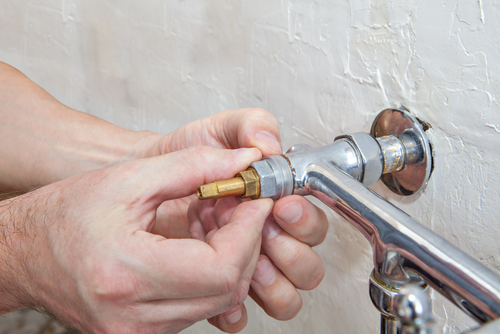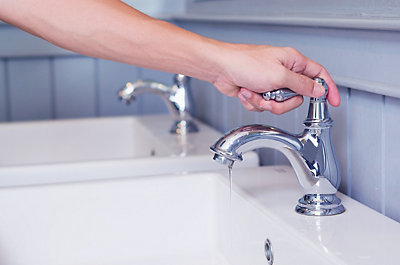This great article underneath on the subject of Leaky Faucets: Why They Happen & What to Do About Them is really motivating. You should give it a look.

Trickling faucets may seem like a minor inconvenience, however their influence goes beyond just the aggravation of the sound. From wasting water to incurring unnecessary monetary prices and health dangers, neglecting a trickling faucet can lead to different repercussions. In this post, we'll look into why it's critical to resolve this typical family concern without delay and properly.
Wastefulness of Water
Ecological Impact
Dripping taps add substantially to water waste. According to the Environmental Protection Agency (EPA), a single tap trickling at one drip per secondly can squander more than 3,000 gallons of water per year. This not only pressures water sources however also influences environments and wildlife depending on them.
Financial Expenses
Increased Water Costs
Beyond the ecological effect, dripping taps can pump up water costs significantly. The accumulated waste over time equates into higher energy expenses, which might have been avoided with timely fixings.
Potential Residential Or Commercial Property Damages
Moreover, extended trickling can lead to damage to fixtures and surface areas bordering the tap. Water accumulation can trigger discoloration, deterioration, and also architectural problems if left neglected, causing added repair costs.
Health Worries
Mold and Mold Growth
The continuous existence of moisture from a leaking faucet creates an excellent setting for mold and mildew and mold development. These fungi not only endanger interior air high quality however also pose health threats, specifically for individuals with respiratory problems or allergies.
Waterborne Diseases
Stagnant water in trickling faucets can end up being a breeding ground for microorganisms and various other pathogens, raising the danger of waterborne conditions. Pollutants such as Legionella bacteria thrive in stationary water, potentially causing major illnesses when ingested or breathed in.
Do it yourself vs. Professional Repair service
Advantages and disadvantages of Do It Yourself Repair
While some may try to deal with a trickling faucet themselves, do it yourself fixings come with their own collection of obstacles. Without correct expertise and devices, DIY attempts can intensify the problem or cause insufficient repairs, lengthening the trouble.
Advantages of Working With a Specialist Plumber
Working with a specialist plumber makes certain that the underlying source of the leaking faucet is addressed effectively. Plumbers have the expertise and tools to detect and fix tap problems effectively, saving time and decreasing the danger of further damages.
Step-by-Step Guide to Fixing a Dripping Tap
Devices Called for
Prior to trying to deal with a dripping tap, gather the essential tools, consisting of an adjustable wrench, screwdrivers, substitute parts (such as washing machines or cartridges), and plumber's tape.
Typical Tap Issues and Their Solutions
Identify the kind of faucet and the certain concern causing the drip. Usual problems include damaged washing machines, corroded shutoff seats, or damaged O-rings. Refer to manufacturer instructions or on the internet tutorials for detailed guidance on repair work.
Safety nets
Normal Upkeep Tips
To prevent dripping faucets, carry out regular upkeep such as cleansing aerators, evaluating for leakages, and replacing worn-out parts quickly. Furthermore, think about setting up water-saving tools or upgrading to more reliable fixtures.
Importance of Prompt Fixes
Addressing dripping taps as soon as they're discovered avoids additional water wastefulness and possible damage, eventually conserving both water and cash in the long run.
Impact on Building Worth
Perception of Well-Maintained Residential Or Commercial Property
Preserving a building in good condition, consisting of attending to upkeep problems like dripping faucets, boosts its regarded value and desirability amongst possible purchasers or renters.
Impact on Resale Worth
Residences with well-maintained plumbing components, including taps, command greater resale values in the realty market. Addressing trickling faucets can add to a positive impact during building evaluations and arrangements.
Environmental Obligation
Specific Contribution to Preservation
Taking responsibility for repairing trickling taps aligns with wider initiatives towards water conservation and environmental sustainability. Every person's actions jointly make a considerable influence on maintaining precious sources.
Sustainable Living Practices
By prioritizing prompt repair work and taking on water-saving habits, people contribute to lasting living practices that benefit both present and future generations.
Verdict
Dealing with a trickling tap goes beyond mere benefit; it's a necessary step towards conserving water, reducing monetary costs, and securing health and home. Whether via DIY fixings or professional help, doing something about it to repair trickling taps is a tiny yet impactful way to promote accountable stewardship of sources and add to a healthier, much more lasting future.
How to Fix a Leaky Faucet: Step-by-Step Repair Guide
A leaky faucet may seem like a simple annoyance, but if it's not fixed promptly, that leak could cost hundreds to potentially thousands. From water damage to mold, mildew, and high water bills, even a tiny leak can be catastrophic if left unattended. Damage like this can even affect the overall value of your home, so it's important to take the right approach for leaky faucet repair. You may need the help of a plumber in some cases, but we've got a few tips you can try on how to fix a leaky faucet before calling the pros.
Four Faucet Types
When you're learning how to fix a leaky faucet, the first step is knowing what kind of faucet you're working with! There are four common types.
Cartridge Faucets
Cartridge faucets come in one- or two-handled varieties. In one-handled cartridge faucets, hot and cold water combines in a single cartridge. In the two-handled versions, hot and cold water are controlled separately and mixed in the faucet.
Ball Faucets
Ball faucets have a single lever you push up and down to adjust the pressure and rotate to change the temperature. A slotted metal ball controls the amount of water allowed into the spout.
Compression Washer Faucets
They're the oldest type of faucet, but they're still used in many homes — especially older ones. Compression faucets have two separate handles that, when turned, raise or lower the washer that seals a water valve. This valve stops water from flowing through the faucet when it is turned off.
Disc Faucets
Disc faucets rarely need to be repaired due to their maintenance-free design. The water flow is controlled by two discs — the upper one raises and lowers against a fixed lower disc, creating a watertight seal. If your disc faucet starts leaking, you may need to replace the seals or clean residue buildup from the inlets.
Fixing a Leaky Faucet
Step 1: Turn Off the Water
Whether you're learning how to fix a leaky bathtub faucet or how to fix a leaky kitchen faucet, always turn off the water supply to your working area when you're fixing a leak. The last thing you want is a flood added to your list of things to fix.
Look for the shutoff valves below your sink or around the tub and turn them clockwise to stop the water flow. If your faucet doesn't have shutoff valves, you may need to turn off the water for the whole house. Check to make sure it's off by turning the faucet on. If nothing comes out, you're ready to start the repair.
Step 2: Take Apart the Faucet
How you disassemble your faucet depends on the type of fixture you have. You can use a flathead screwdriver to remove the caps on top of the handle or handles for cartridge and compression faucets. Inside, you should see handle screws. Unscrew these with a screwdriver to remove the handle.
Disc- and ball-style faucets will typically have an inlet screw near the handle, and removing that will reveal the interior of the faucet.
Detach the Valve Stem
For cartridge- and compression-style faucets, you'll see the inner valve stem or cartridge once you remove the faucet handles. If you have a compression faucet, unscrew the brass valve stem. If you have a cartridge faucet, pull out the cartridge. If your cartridge has been in place for a while, it may require some tools or extra force to remove it due to mineral deposits.
Examine and Replace Parts
Once you've removed the parts, check them out to confirm what needs to be replaced. You may see corroded rubber washers, O-rings, stems, or cartridges. On a ball-style faucet, check the seats and springs for damage.
If you need to repair a leaky disc faucet, check the inlet and seals on the lower disc.
Once you determine what parts must be replaced, visit your local hardware store. Bring the damaged parts with you to ensure you can purchase the correct components to replace them.
Clean Valves and Faucet Cavity
If you've removed a stem or cartridge, you may notice mineral buildup in the faucet's threads. Use white vinegar to clean the valve seat by soaking it for a few minutes, then scrub it away with a soft toothbrush and rinse with warm water. You can also clean the interior of the faucet in the same way.
Reassemble the Faucet
Once your faucet is cleaned and the required parts have been replaced, it's time to reassemble it. Put the pieces back together and slowly turn the water supply back on. Doing this slowly is crucial because too much initial water pressure can damage the new hardware you've just installed.
https://homewarranty.firstam.com/blog/how-to-fix-leaky-faucet

As a devoted person who reads about Water Dripping from Faucet: Why and How to Fix, I assumed sharing that information was a good idea. Do you know about another person who is intrigued by the niche? Please feel free to promote it. Thanks a lot for your time invested reading it.